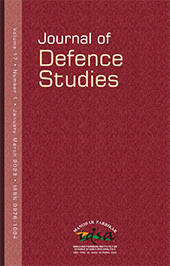Defence Technology Ecosphere for Viksit Bharat
- Hari Babu Srivastava |
- July-September 2024 |
- Journal of Defence Studies
Defence Acquisition Procedure for Self-Reliance
- Amit Cowshish |
- July-September 2024 |
- Journal of Defence Studies
The Making of Technological Innovation Ecosystem in Defence Sector
Cultivating dynamic defence innovation ecosystems that are bolstered by sustainable policies and robust infrastructure is the need of the hour. To achieve this, the Government of India has committed to adopt a multifaceted approach, by collaboration among researchers, talent and industries, including micro, small and medium enterprises (MSMEs) and start-ups. This article explores the evolving ecosystem of start-ups, which has a role in fostering technological innovation within a self-reliant defence ecosystem.- Om Prakash Das |
- July-September 2024 |
- Journal of Defence Studies





